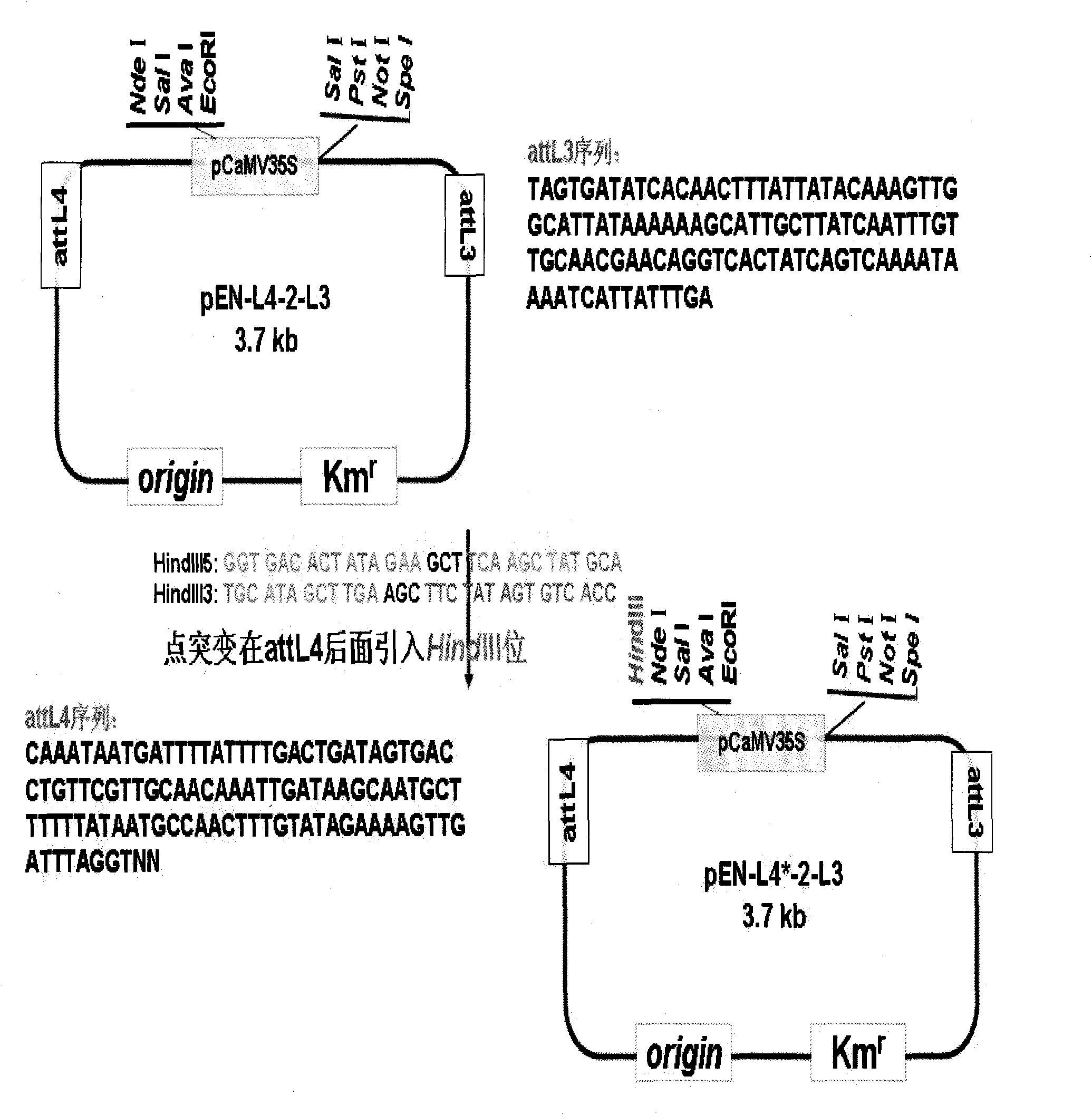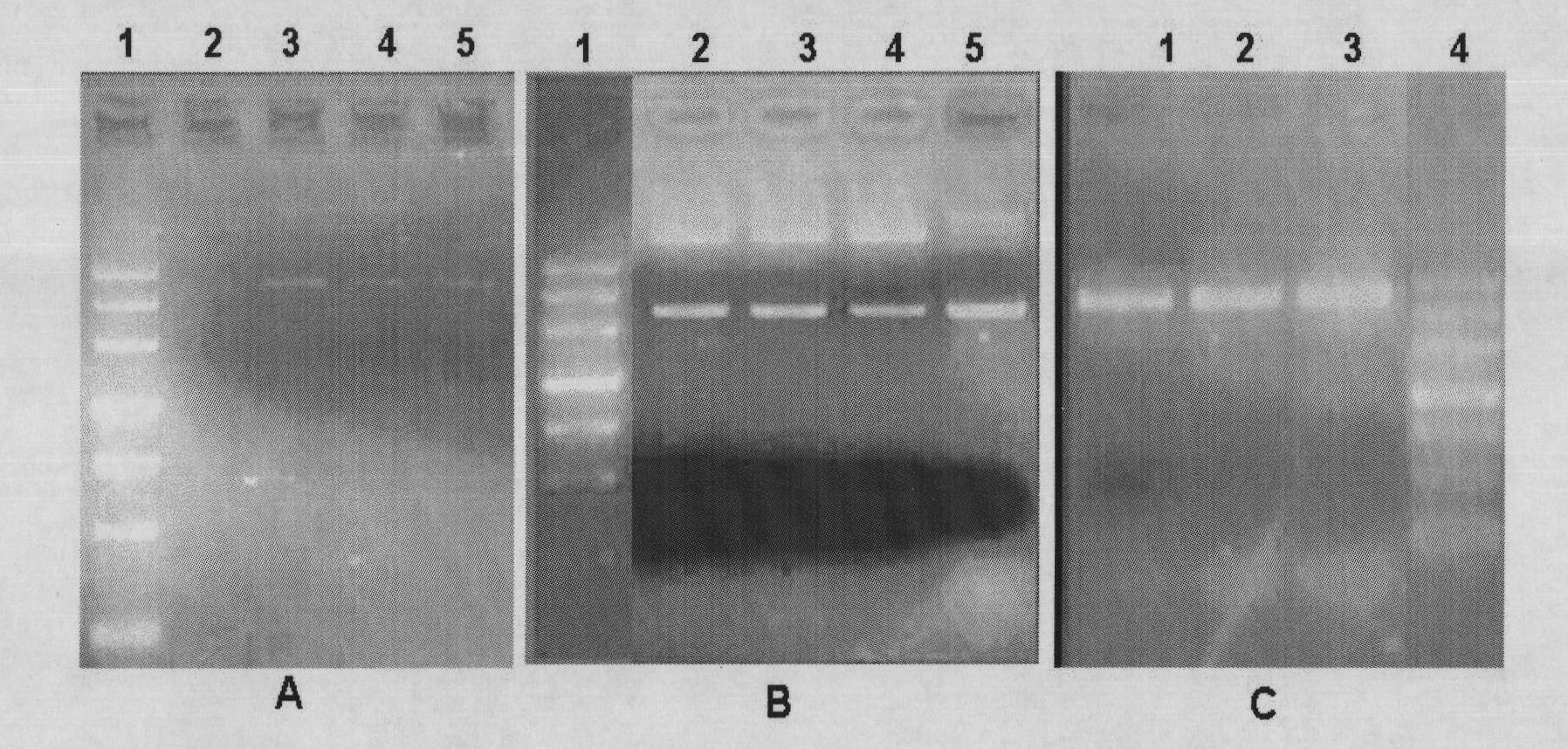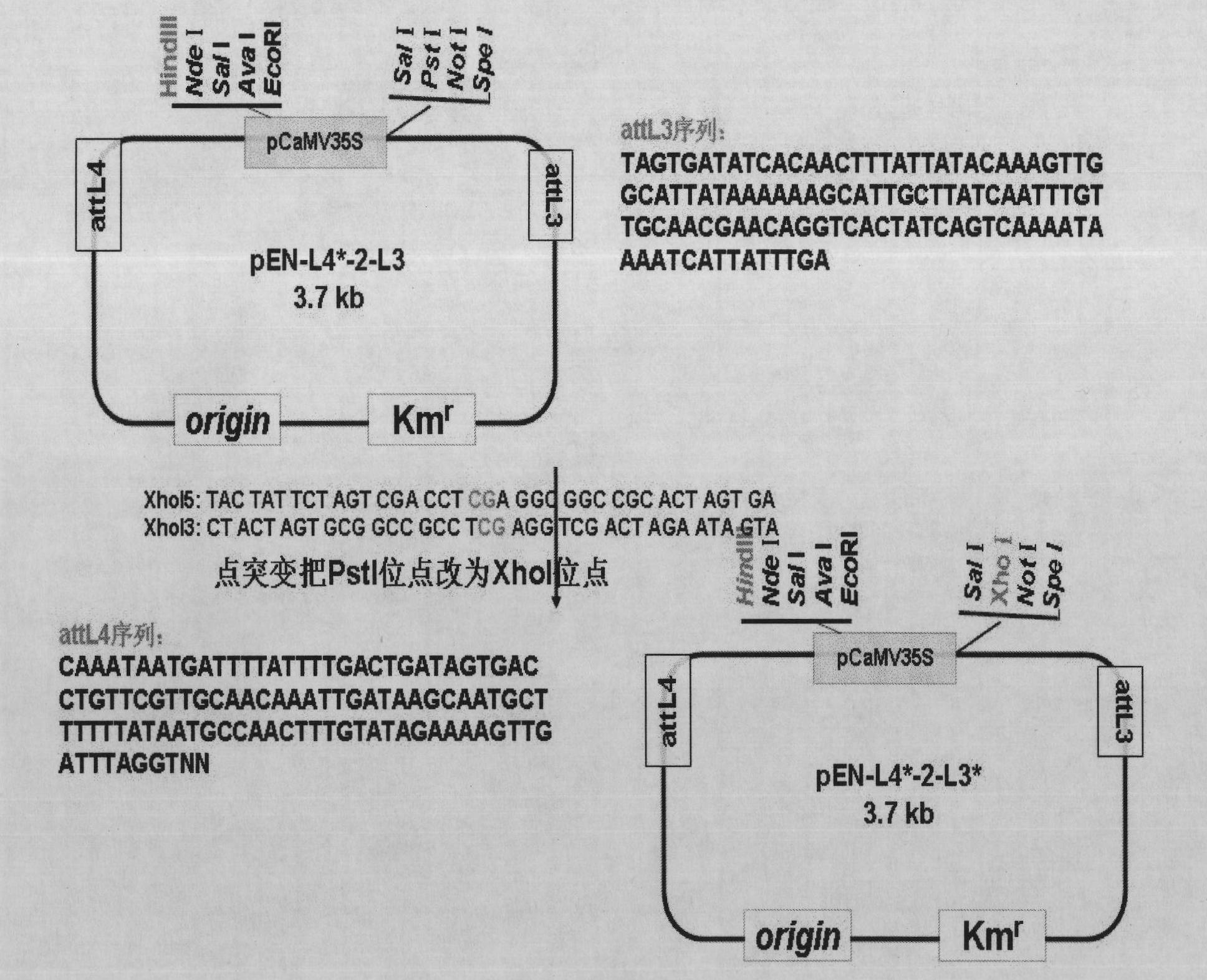Gateway inlet vector pEn-L4*-PrbcS-*T-GFP-L3*, construction method thereof and application thereof
A T-GFP-L3, T-GFP technology, applied in the field of molecular biology, can solve the problem of no chloroplast transfer peptide sequence and so on
- Summary
- Abstract
- Description
- Claims
- Application Information
AI Technical Summary
Problems solved by technology
Method used
Image
Examples
Embodiment 1
[0047] Example 1: Introducing the HindIII site into the entry vector pEN-L4-2-L3 using point mutation technology
[0048] Using the purified plasmid pEN-L4-2-L3 (purchased from VIB / Gent, Belgium) as a template, a pair of complementary primers HindIII5 and HindIII3 ( figure 1 ), add 25ng of purified plasmid pEN-L4-2-L3 as a template in the point mutation reaction mixture, add 50ng of point mutation primers HindIII5 and HindIII3, 1μl dNTP (10mM), 5μl of 10×LongTaq reaction buffer and 1μl Long Taq polymerase (Tiangen Biochemical Technology), and double distilled water was added to make the final volume of the reaction 50 μl. Heat at 94°C for 3 minutes on the PCR instrument, then perform 18 cycles of reaction according to the program of 94°C for 30 seconds, 50°C for 30 seconds, 72°C for 3 minutes and 40 seconds, and finally extend the reaction at 72°C for 10 minutes. Synthesize the daughter chain containing the mutation site ( figure 2 A). After the reaction was completed, the...
Embodiment 2
[0049] Example 2: Using point mutation technology to change the PstI in the attL3 downstream multiple cloning site of the entry vector pEN-L4*-2-L3 to XhoI
[0050] Using the plasmid pEN-L4*-2-L3 as a template, a pair of (XhoI5 and XhoI3) complementary primers (XhoI5 and XhoI3) for point mutations were designed according to the sequence near the PstI site ( image 3 ), and entrusted Shanghai Sangong Synthetic Co., Ltd. Add 25ng of purified plasmid pEN-L4*-2-L3 to the point mutation reaction mixture as a template, and at the same time add 50ng of point mutation primers XhoI5 and XhoI3, 1μldNTP (10mM), 5μl of 10×Long Taq reaction buffer and 1μl of Long Taq polymerase (Tiangen Biochemical Technology), and double distilled water were added to make the final volume of the reaction 50 μl. Heated at 94°C for 3 minutes on a PCR instrument, followed by 18 cycles of reaction at 94°C for 30 seconds, 60°C for 30 seconds, and 72°C for 4 minutes, and finally extended the reaction at 72°C f...
Embodiment 3
[0051] Example 3: Construction of entry vector pEN-L4*-PrbcS-*T-GFP-L3*
[0052] Use HindIII and XhoI to cut pEN-L4*-2-L3* and pENTR*-PrbcS-*T-GFP (pENTR*-PrbcS-*T-GFP construction method see another patent application of the applicant, application No. 200710066422.9), separated the cut vector and insert fragment by agarose gel electrophoresis, recovered the vector fragment pEN-L4*-L3* (2.6kb) and pENTR*-PrbcS-*T-GFP was cleaved to generate a PrbcS-*T-GFP DNA fragment (2.4kb), and then pEN-L4*-L3* and PrbcS-*T were combined with a ligase kit from TaKaRa -GFP was ligated to obtain the entry vector pEN-L4*-PrbcS-*T-GFP-L3*( Figure 5 ). Conversion of high efficiency (10 8 ) Escherichia coli competent cells (DH5α, Tiangen Biochemical Technology), spread the transformed Escherichia coli on a plate added with kanamycin (Kan, 50 μg / ml), cultivate overnight at 37°C, and screen for Km resistance. Recombinant colonies of resistant recombinants, plasmids were extracted from colonies...
PUM
 Login to View More
Login to View More Abstract
Description
Claims
Application Information
 Login to View More
Login to View More - R&D
- Intellectual Property
- Life Sciences
- Materials
- Tech Scout
- Unparalleled Data Quality
- Higher Quality Content
- 60% Fewer Hallucinations
Browse by: Latest US Patents, China's latest patents, Technical Efficacy Thesaurus, Application Domain, Technology Topic, Popular Technical Reports.
© 2025 PatSnap. All rights reserved.Legal|Privacy policy|Modern Slavery Act Transparency Statement|Sitemap|About US| Contact US: help@patsnap.com



